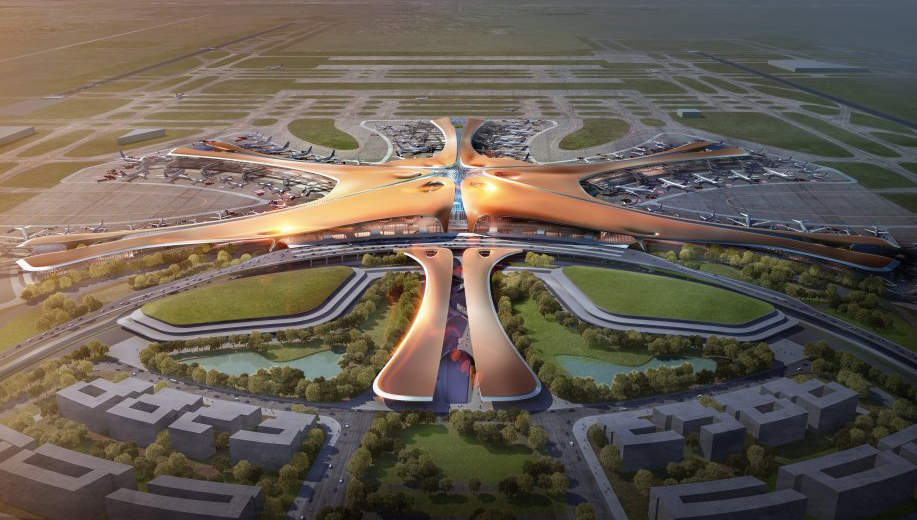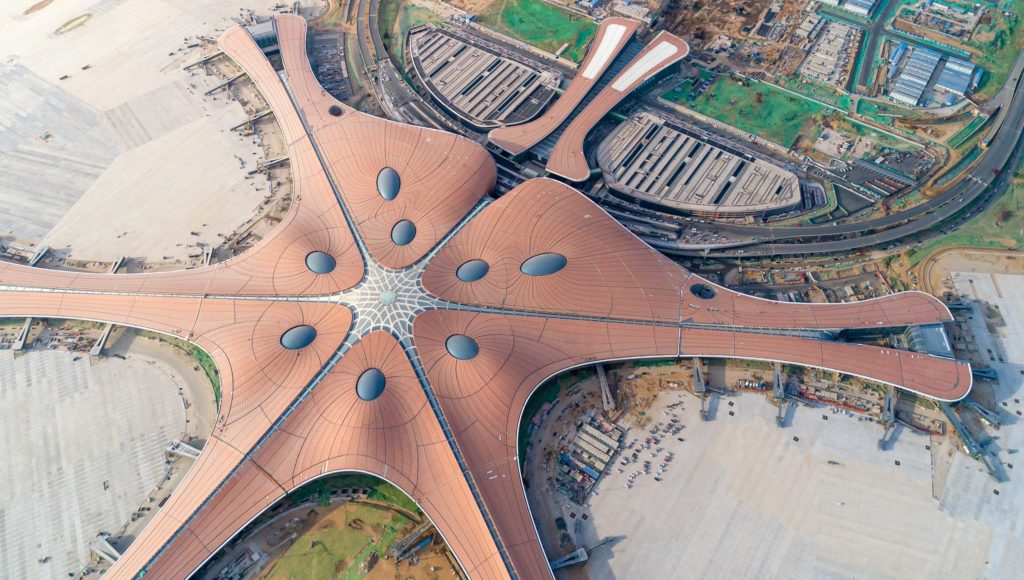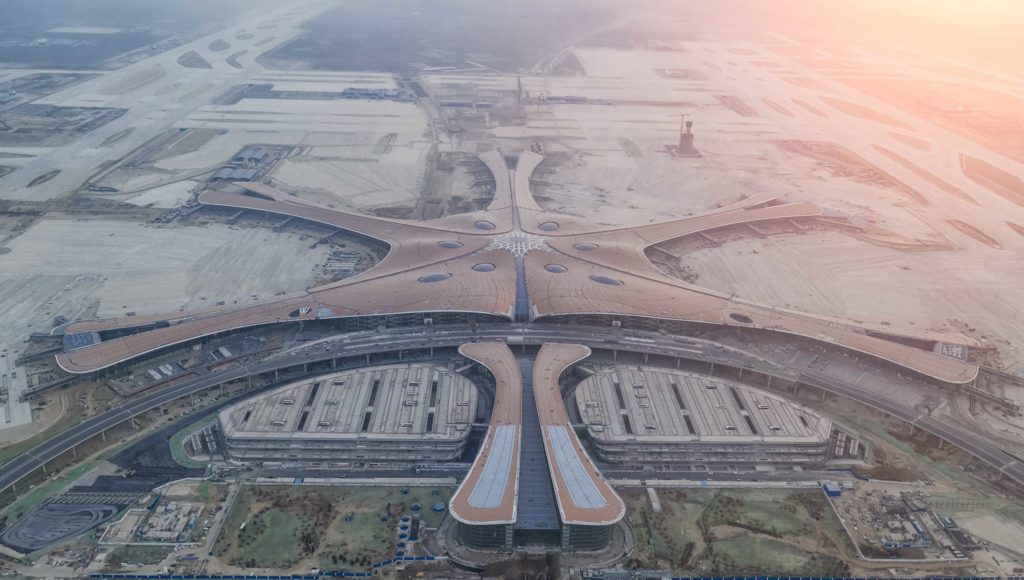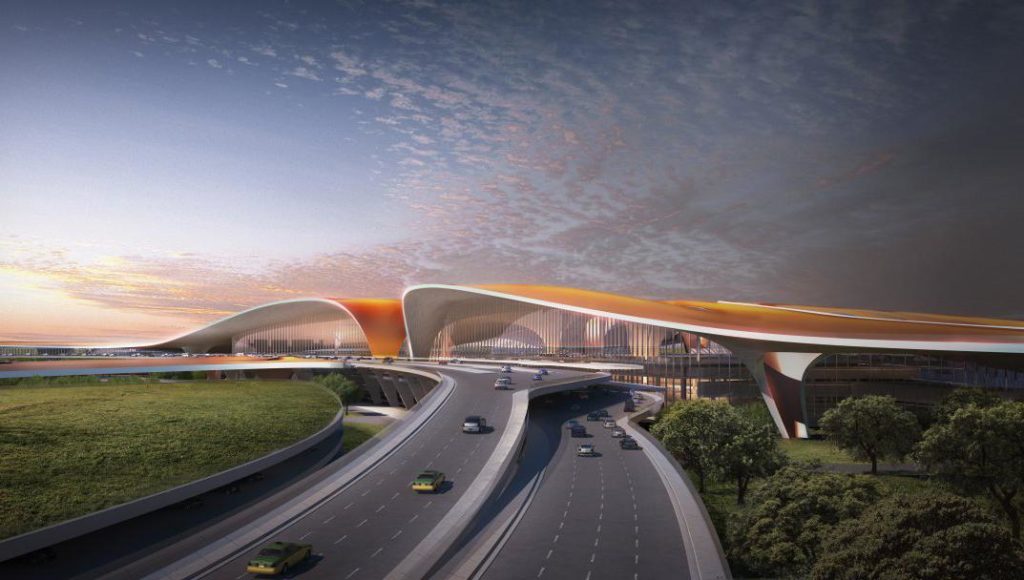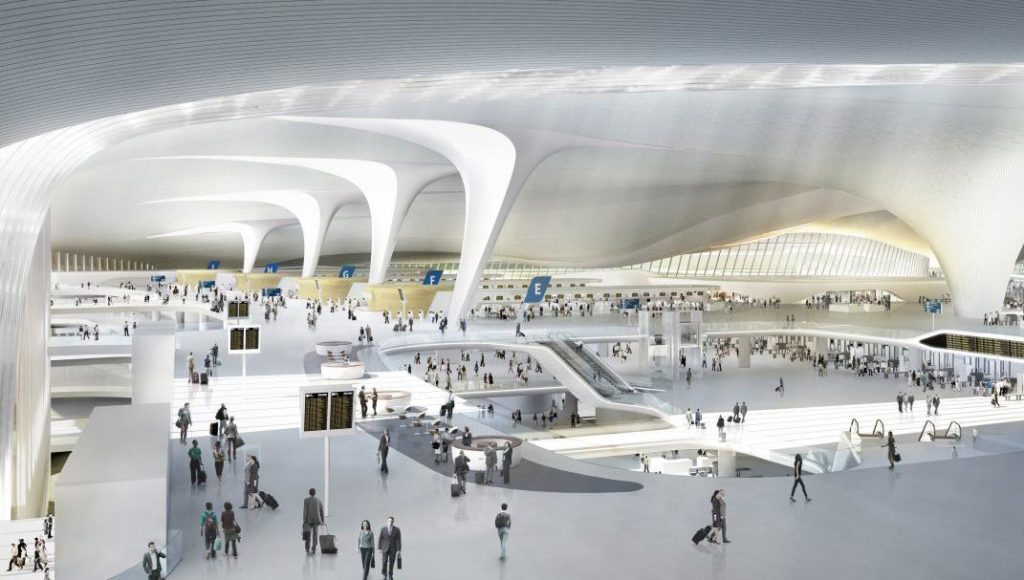Beijing: an octopus takes off!
After only four years of construction, the world’s largest airport – Beijing Daxing International Airport – has opened its gates. This mega project developed by architectural firm Zaha Hadid has caused a sensation – not only because of its many superlatives, but also because of its unusual appearance.
Viewed from the air, the colossal complex looks like an octopus that has slithered onto land to lounge in the sun around 70 kilometres south of the capital Beijing. Or perhaps this lonely cephalopod is just waiting for some company. At any rate, it’s sure to have a busy calendar in the near future. Indeed, this giant octopus is a huge airport that has just opened its gates.
Octopus, starfish or phoenix
But wait, let’s put in a brief stopover before we continue with our flight. In the eyes of the celebrated architects at Zaha Hadid, the airport has nothing in common with an octopus or a starfish. In fact, the structure is intended to resemble a phoenix rising from its ashes…
Okay, fasten your seatbelts, we’re ready for take-off. In the long term, Beijing Daxing International Airport is expected to handle as many as 100 million passengers a year. That’s just one of the many jaw-dropping figures that come up in connection with this new airport. The best way to come to grips with the sheer magnitude of the project is to play a little numbers game:
- 700,000 square metres total surface area
- 6 runways
- 50 passenger boarding bridges
- 3,000 flight information screens
- 186 boarding gates
- 422 check-in counters
- 63 luggage belts
But the daunting dimensions of this sprawling monster can perhaps best be expressed in terms of the amount of money spent on its construction: 51 billion euros! To make this figure somewhat easier to grasp: this is what it would cost to send 662 brave souls on a flight to the moon as space tourists or build 100 of the largest cruise ships in the world. With this amount of money, it would of course also be possible to end the world hunger crisis seven times over. That’s at least according to estimates by the charity Caritas. But it’s time we brought ourselves back down to earth.
Although the gigantic airport was opened just in time for the 70th anniversary celebrations of the People’s Republic of China, it can’t be dismissed out of hand as a prestige project or even as a show of strength by the Chinese leadership. Despite the fact that the burgeoning metropolis of Beijing already has an only slightly smaller airport with the Beijing Capital International Airport, which currently accommodates 94.4 million passengers a year, Western experts have confirmed the need for a second mega airport.
Four million tonnes of cargo
According to analysts, the existing airport is in fact too small for the city and its 23 million inhabitants. They point out that, viewed objectively, the old airport has reached its capacity limit. Since 2010, the number of passengers that annually pass through that airport has soared by over 20 million to the current level. Furthermore, the demand for air travel in the Chinese capital is anticipated to continue to grow. China is a growing economic powerhouse, which means that the new airport will primarily serve as a trans-shipment hub that is capable of handling up to four million tonnes of freight a year.
Aside from this, China’s rapid economic expansion has prompted Beijing to take an entirely new course. It is currently building a new capital region called Jing-Jinn-Ji. Chinese leaders hope this will flourish as an international showcase and unite Beijing with the city of Tianjin and the coastal province of Hebei.
Beijing as the flagship
All of this will entail an ever-increasing focus on Beijing itself and its prestigious role as the capital city. This encompasses everything from the national government and international relations to research and development. The other two cities are to assume somewhat less glamorous roles. The gigantic new airport at the heart of this new city of tens of millions of people will ultimately come to play a particularly important role in this development.
This airport is the largest integrated transport hub in the world!
Project Manager Bai Henhong
This brings us to the architecture of this newly opened mega airport, with its eye-catching glass-and-steel design and iridescent shell. It was created by the world-renowned architectural firm of Zaha Hadid, who died in 2016. Apart from its spectacular appearance, the building is of course also carefully designed right down to the smallest detail to make it as functional as possible.
Conveniently short walking distances, plenty of shops
For starters, the “octopus shape” guarantees that no passenger rushing to catch a flight has to walk more than 600 metres, which is the exact length of each of the airport’s arms. In addition, the building was designed with three levels to provide as much space as possible for restaurants, shops and recreational activities. These offer passengers something fun to do while they wait for their flights.
“It’s the largest integrated transport hub in the world,” Project Manager Bai Henhong boasts with justifiable pride. China is now gazing to Western Europe with a sense of schadenfreude. The recent opening of the Chinese flagship airport after only four years of construction has been a downright humiliating experience for some, especially from a German perspective, where all efforts over the past 13 years to open a much smaller airport in the Berlin region have ended in utter failure.
The Germans should do their homework
German “master builders and architects” will just have to accept that the Chinese media are having a field day poking fun at them. “They could learn a thing or two from us,” one Chinese journalist wrote. “German quality? Give me a break,” another reporter cynically remarked.
Perhaps this explains why the German airline Lufthansa has decided not to serve the new airport in Beijing. Instead, company officials insist that they would rather stick with the old airport.
Text: Johannes Stühlinger
Translation: Rosemary Bridger-Lippe
Images: Getty Images; Zaha Hadid Architects
